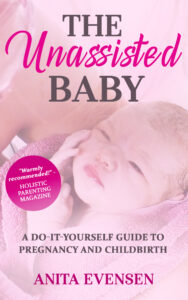How Do You Cope with Labor Pains?
Whether you’re giving birth at home, at a birth center, or at a hospital, you’re most likely going to experience some labor pains. The interesting thing about the sensations during labor is that they’re not painful to everyone. In fact, our modern culture equates childbirth with pain, while other more “primitive” cultures don’t have those same associations. Everybody also has a different pain tolerance. So how do you cope with labor pains?
How Do You Handle Pain during an Unassisted Childbirth?
It may surprise you that childbirth doesn’t have to be painful at all. Some women even report orgasmic births. We expect and feel pain during labor and birth because we are conditioned to think that way.
Did you know that labor contractions are very similar to an orgasm?
In both instances, your uterus contracts. Of course, labor contractions are much more powerful than the contractions you experience during an orgasm.
You don’t have to believe that labor and birth will be painless in order to give birth unassisted. In fact, most women who give birth naturally will tell you that part of it was very painful, even to the point where they wanted to give up.
But whether you give birth unassisted or not, you have to figure out how to deal with the pain in order to give birth naturally. Besides, having an epidural isn’t necessarily pain free, either.
Most women find that they can handle the pain during labor. While there are a few things you can try to relieve the pain or distract yourself, it’s not necessary to practice this beforehand. Being able to meditate and visualize can help, but you will probably become quite calm all on your own.
Here are a few pain relief strategies women have found helpful during labor and birth:
- Visualize the baby moving down the birth canal
- Breathe deeply and calmly. (Never hyperventilate!)
- Meditate
- Listen to calming music
- Receive a massage from your partner
- Take a warm bath (This is also called the midwife’s epidural.)
Relax and Keep Breathing
When you think about labor and childbirth, you might picture a movie scene where the woman is panting. But you don’t need any special breathing techniques in order to get through labor. In fact, hyperventilating is detrimental, because it just wears you out without giving you extra oxygen. The best thing you can do is to relax and just keep breathing calmly.
Some women feel better prepared when they have learned relaxation methods to help them through labor. There is nothing wrong with that. Meditation and relaxation techniques can help you greatly for the rest of your life. But even if you don’t prepare especially, your body will just take over as long as you let it. Rest and stay calm.

Don’t Focus on the Pain
This may be easier said than done, but if you focus on how much it hurts, then it will probably hurt more. Instead of focusing on the pain, shift your attention to something else. You can focus on your partner, your pillow, a fantasy vacation you’d like to have, or that you get to meet your baby soon. You won’t experience any more pain than you can handle, so you should try to just trust in the process.
By the way, when the pain becomes unbearable, you’re probably really close to the end. That’s the point when women in the hospital may scream for the epidural, but a smart midwife will just calmly tell you it’s time to have your baby.
Explore Pain Relief Options
You can have pain relief without an epidural. While labor is not meant to be like a walk in the park, you can make it less painful by trying out a few natural pain relief options, such as getting in the water. Something about a warm bath is very soothing, especially for back pain. But you can also ask your partner to massage you and apply hot or cold compresses to your back.
Try to find a position that’s comfortable for you. Most women don’t stay in the same position throughout labor and birth. Movement can help facilitate the descent of the baby, but it can also make you feel less uncomfortable. During the early stages of labor, walking around is a great option for most women. But if you’re tired and don’t feel like walking, get some rest instead.
Listen to Your Body
The best thing you can do during labor is to listen to your body. Drink plenty of water when you’re thirsty. Use the bathroom often and don’t be afraid to make noise if it makes you feel better. Even if the neighbors complain about you later, you’re not likely to repeat the offence anytime soon.
What Is the Ring of Fire in Childbirth?
There are as many unique birth experiences as there are babies being born. It’s not just the fact that every woman is different, but childbirth can even differ for the same woman each time. However, one thing that pops up consistently is women describing what is known as “the ring of fire”.
If you’ve never given birth before, this doesn’t sound very appealing. In fact, it sounds like pain. What is it really, and how will you experience it during childbirth?
When the Baby Is Crowning
The ring of fire refers to the baby’s head being born. Initially, the baby will be crowning. You can feel his head at your vaginal opening, but the head has yet to be born. At this point, your vaginal tissues need to stretch in order to help your baby fit. It can feel painful for a lot of women. While you won’t rip apart, there might be a moment or two when you’re worried about that.
What to Do When during the Ring of Fire
As your baby’s head is being born, there are essentially two courses of action open to you. On the one hand, you are having a powerful contraction, and your body might tell you to push. On the other hand, you have this intense painful sensation around your vagina, which is telling you to stop pushing.
To prevent vaginal tearing, you’re going to want to breathe through the contraction as much as possible.
You can also try some counter pressure to help your tissues stretch gradually. You can use a warm washcloth or oil compress to prevent tearing. And you definitely don’t want to miss out on feeling your baby come out of you. You can put your hand there and feel his head. After all, it’s your body.
If you want to avoid vaginal tears, DON’T PUSH through the pain of the ring of fire. It’s easy to just give up and push to get it over with, but it’s much better for your vaginal tissues if you pace yourself just a little bit. Either way, you’re minutes away from holding your baby in your arms.
Are You Interested in Having a Homebirth?
The Unassisted Baby is THE comprehensive guide every woman needs to give birth on her own. It includes information about prenatal care, pregnancy concerns, how to have a homebirth, a homebirth supply checklist, signs of labor, how to cope with labor pain, stages of labor and birth, potential complications, and even a guide for fathers. Get your copy of this invaluable resource today!

